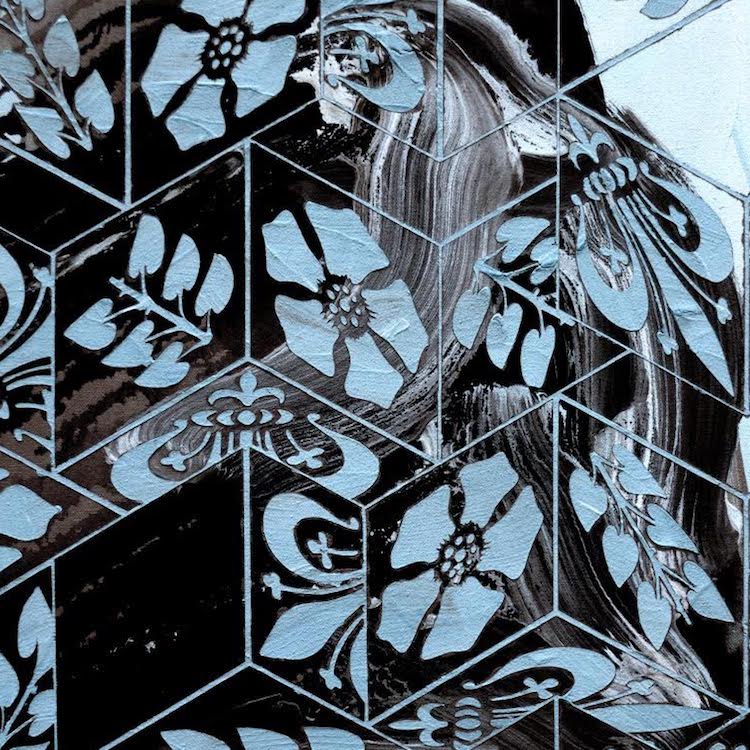RAMSGATE, England — En Avant (July 14 – September 17, 2017) is a new series of clay paintings by artist Robert Dawson, which draw from the visual language and stylized motifs of Gothic Revival architect A.W.N. Pugin (1812-1852).
Dawson reimagines Pugin’s designs from both the Shrine of St Augustine, Ramsgate, which was constructed in keeping with the “true principles of Christian architecture” (1845–52), and The Grange (1843), Pugin’s family home next door. Dawson embodies the artisanal spirit of Pugin himself, while revitalizing his designs for the twenty-first century. Pugin’s personal motto “en avant,” meaning “onward,” is the principal idea: onward in time and continuing forward.
Across a series of twelve works, Dawson resamples and reinterprets many of Pugin’s Gothic motifs, such as the fleur-de-lis, scrolling foliage, and roundels. Dawson modifies Pugin’s decorative designs to disorienting effect, first using image-editing software and processing techniques to play with patterns and “draw rhythms.” He then skillfully translates these onto canvas, using more traditional materials such as paint, adhesive, and clay slip to build depth and complexity into each work. The twelve multi-layered canvases are elaborate and unpredictable, inviting the viewer to reconsider Pugin’s medievalizing aesthetic.
The Shrine of St Augustine is delighted to host En Avant, which coincides with the completion of the latest stage of a $1.9 million restoration of the Grade I listed building, funded by English Heritage and the Heritage Lottery Fund, as well as the opening of a new Visitor Centre.
 Text (edited) from Aesthetic Sabotage
Text (edited) from Aesthetic Sabotage
About the Artist: Robert Dawson lives and works in London, where he runs his studio Aesthetic Sabotage. He studied for a BA at Camberwell College of Arts, and an MA at the Royal College of Art. In the early 1990s, Dawson began working with historic ceramic sources, which he manipulated and reapplied to china tableware and ceramic tiling. His re-workings of the Willow Pattern included the enlargement, distortion, and cropping of elements within this familiar chinoiserie decoration, and his new style of working has been widely imitated. Dawson soon moved on to the creation of large-scale public art works. In 2004, he designed an award-winning range of bone china, After Willow Pattern, for Wedgwood, which forms part of the collections at the V&A Museum, London; alongside his bone china plate In Perspective Willow (1992). More recently, Dawson has been investigating the nature of pattern and sequences. His commission for the new Sedgemoor building in Liverpool incorporates Minton tile patterns taken from Liverpool’s St George’s Hall; while his Arianna range for the Italian tile manufacturer Ceramica Bardelli develops aspects of a Minton tile design to create “labyrinthine” tiles.
Do you love or loathe these works of contemporary ceramic art and contemporary ceramics? Let us know in the comments.
















Add your valued opinion to this post.